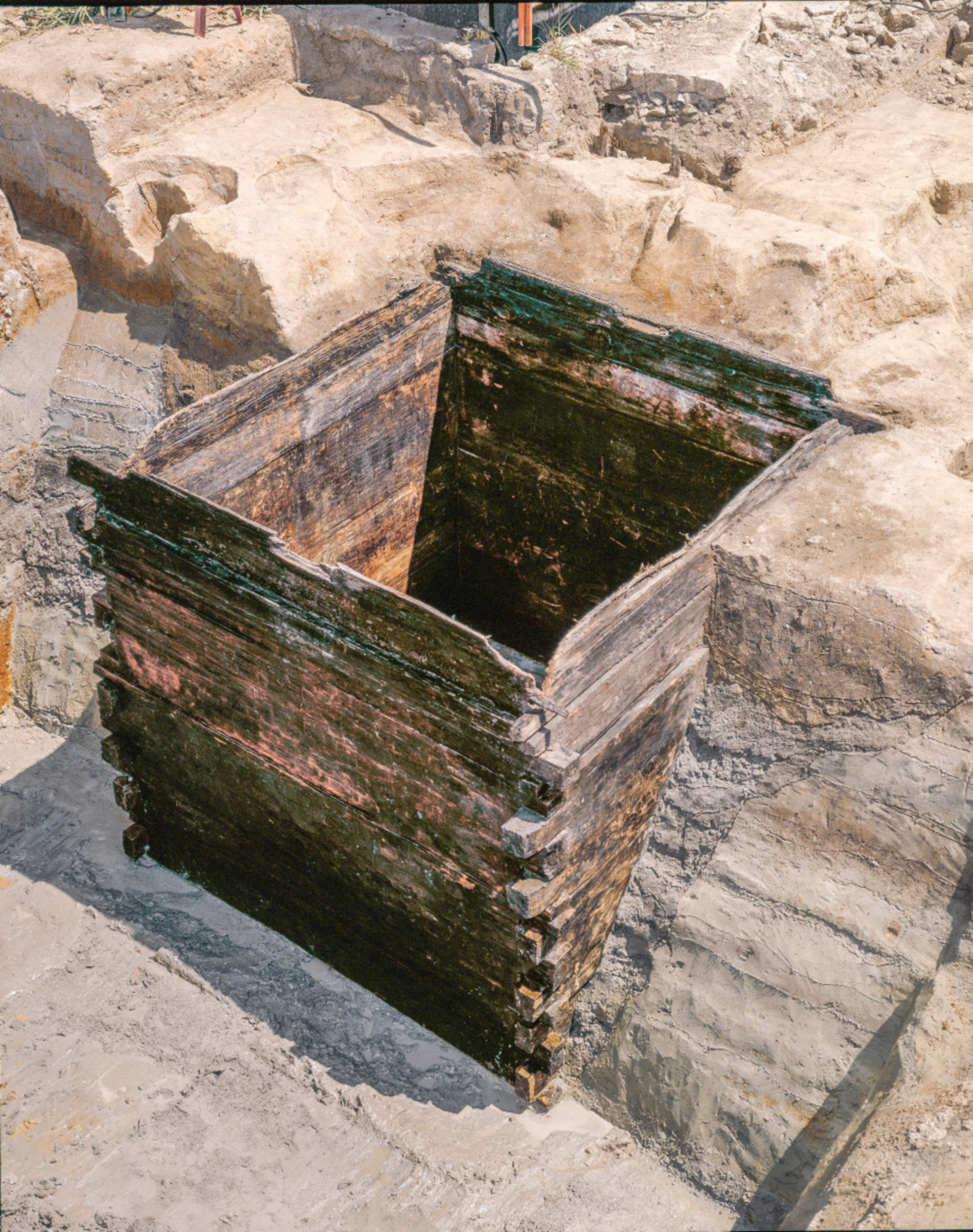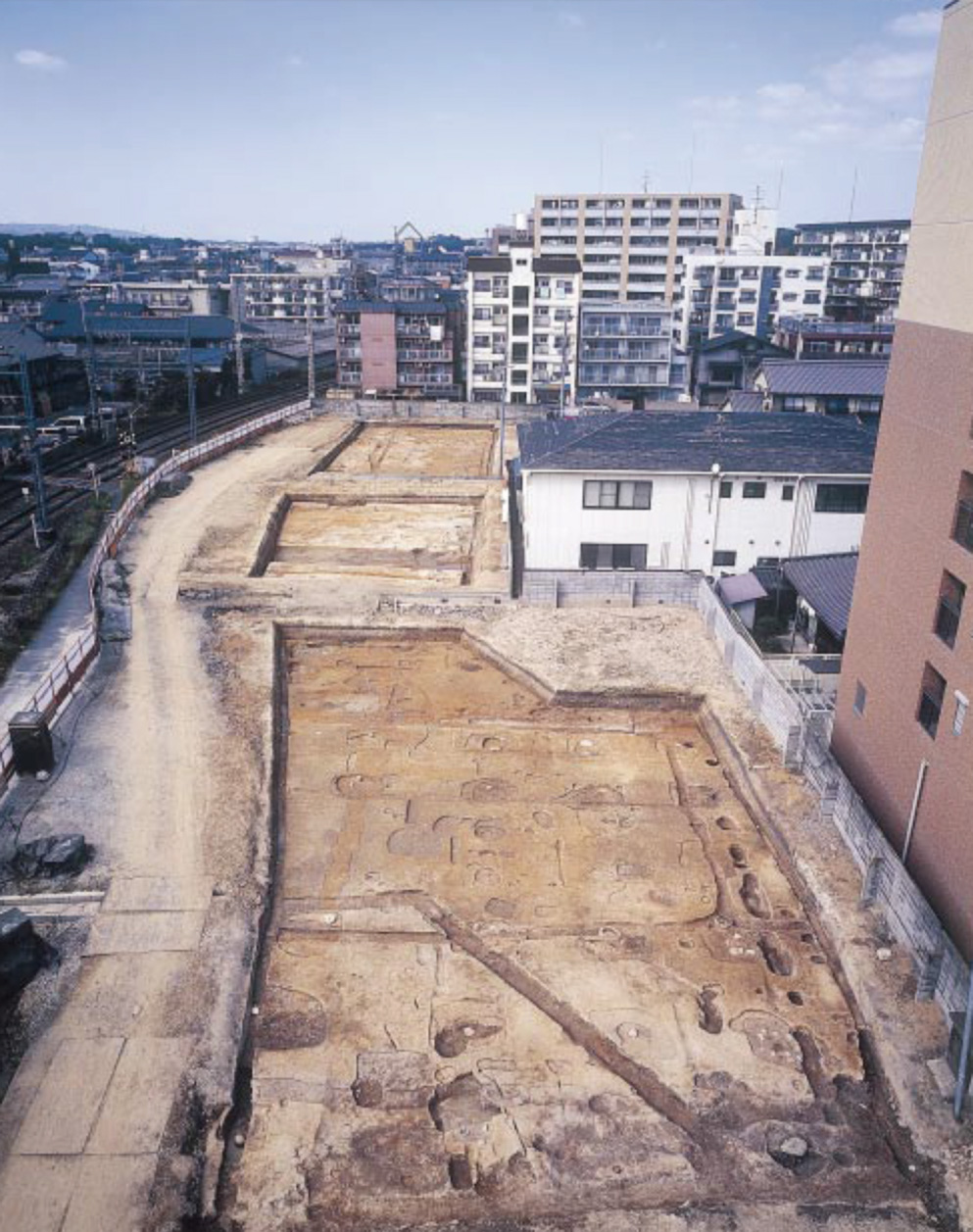Temples of Heijo-kyo
Temples of Heijo-kyo
One of the defining traits of Heijo-kyo was its many temples, and many excavations have taken place to find out more about them. Let's take a look at some of the findings.
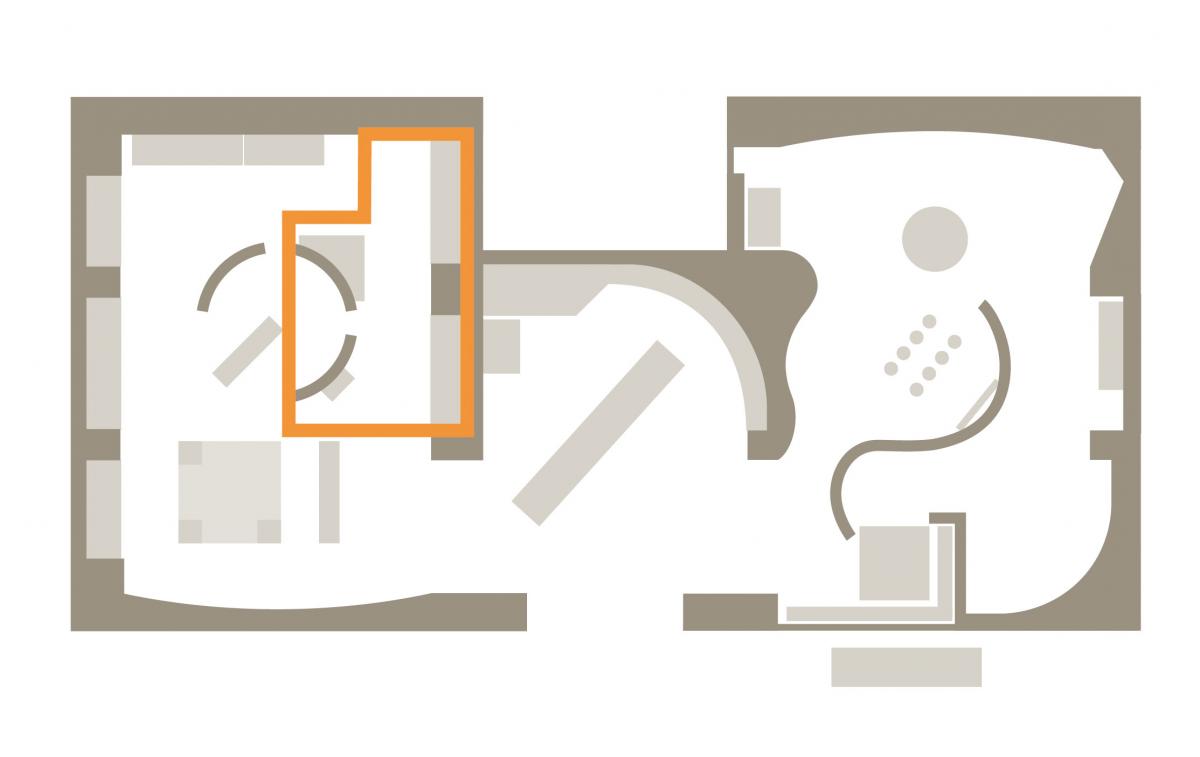
■ Temples Followed the Capital from Fujiwara-kyo to Heijo-kyo
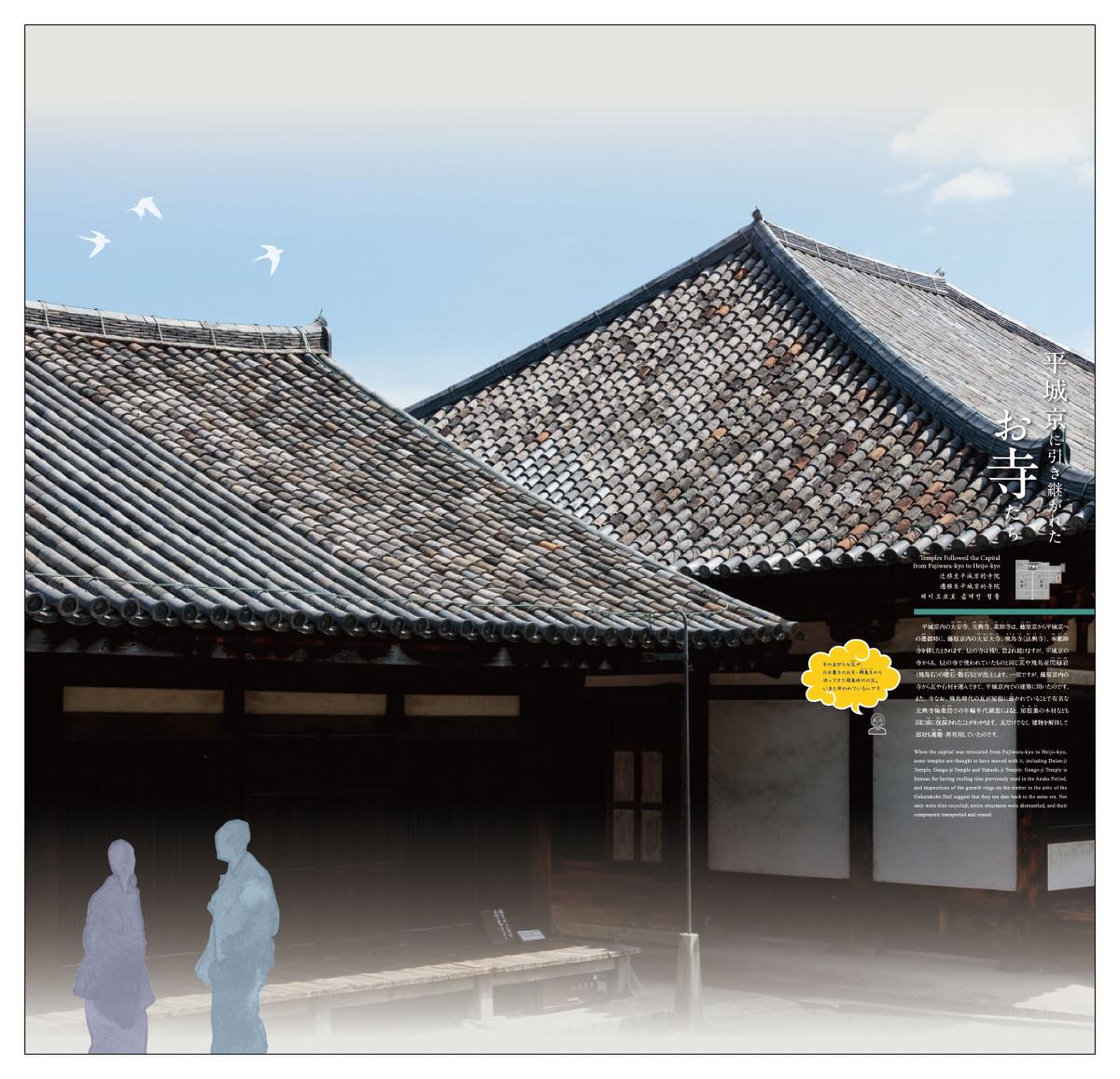
When the capital was relocated from Fujiwara-kyo to Heijo-kyo, some temples are thought to have moved with it, including Daian-ji Temple, Gango-ji Temple and Yakushi-ji Temple. Gango-ji Temple is famous for having roofing tiles previously used in the Asuka Period, and inspections of the growth rings on the timber in the attic of the Gokurakubo Hall suggest that they too date back to the same era. Not only were tiles recycled; entire structures were dismantled, and their components transported and reused.
■ The Unearthed Temples
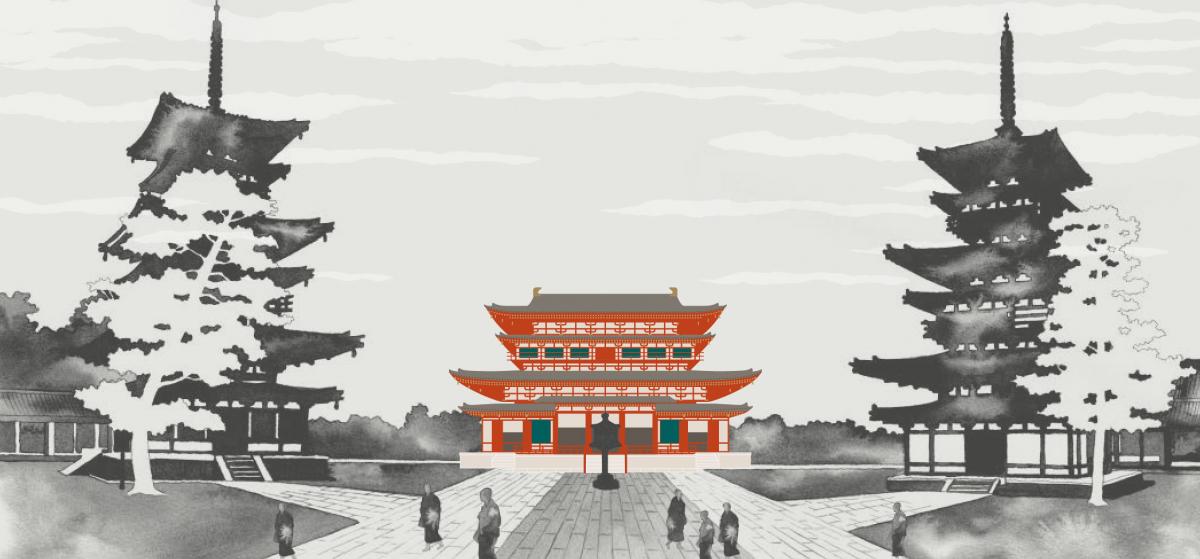
Thorough excavations have revealed the shape and form of temples of the Nara Period from both inside and outside of Heijo-kyo; dismantled, abandoned temples have come to light, too. Some 1,300 years later, these temples provide valuable insight into life from the Nara Period onwards.
○ Todai-ji Temple
One of the provincial temples known as the Konkomyo Shitenno Gokoku no Tera, or "Temples for the Protection of the Nation by the four Guardian Deities of the Golden Light,” a ceremony was held here in 752 to consecrate the newly finished great image of Buddha. Excavations have revealed details about the image's casting.
○ Daian-ji Temple
This was originally the state-sponsored temple Daikandai-ji Temple transferred from the Fujiwara-kyo capital in 716. The huge western pagoda was completed in the early days of the Heian Period.
○ Yakushi-ji Temple
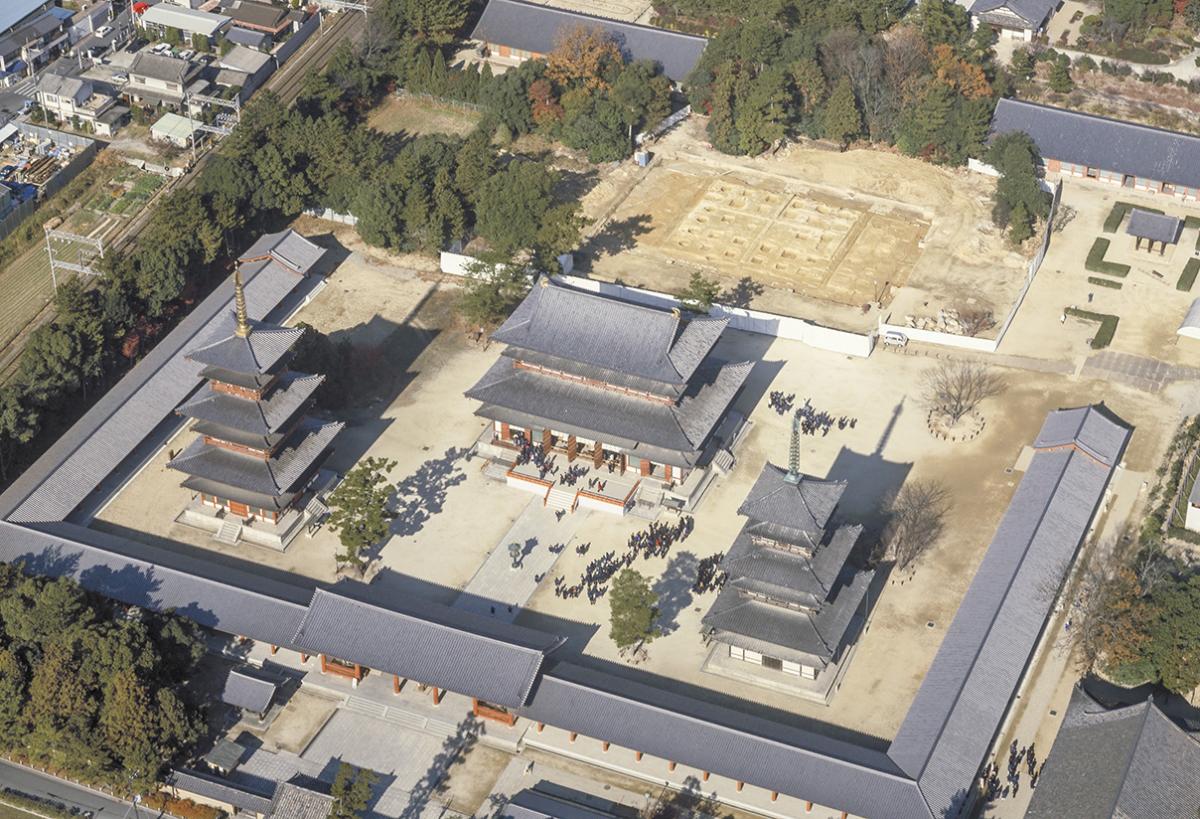
The predecessor of this temple was Yakushi-ji Temple of the Fujiwara-kyo capital, established in 680 commissioned by the Emperor Tenmu. The process used to build this structure was clarified through excavation digs conducted from 1954, prompting efforts to restore the temple to its former glory.
○ Hokke-ji Temple
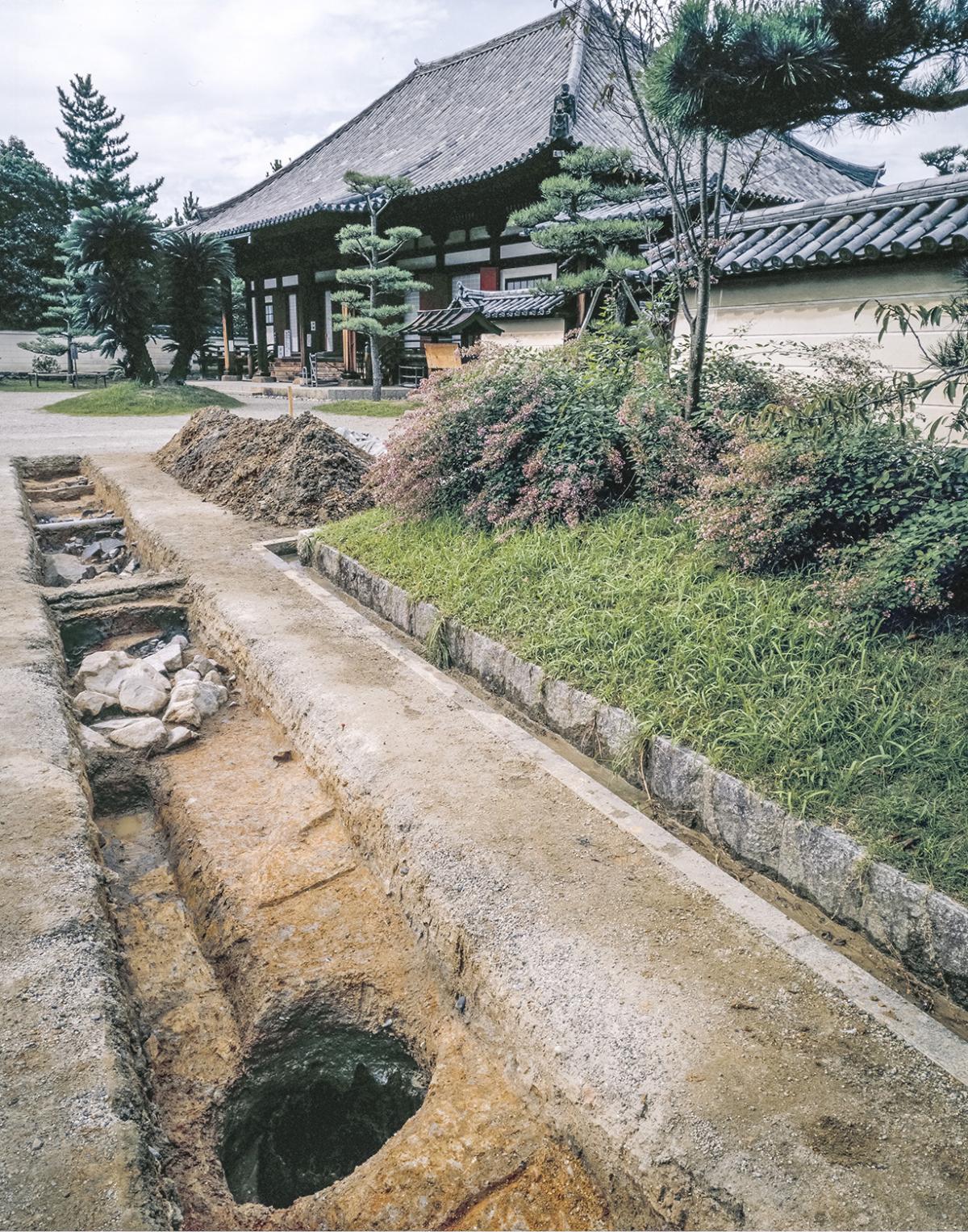
Officially known as “Hokke Metsuzai no Tera,” dating back to when the palatial estate of Fujiwara no Fuhito was converted into a convent. The results of archeological excavations showed that lying beneath the present main temple are six neatly lined-up buildings, structures with pillar holes measuring about 1.8-meters on each side, and other remains.
○ Zuto Tower
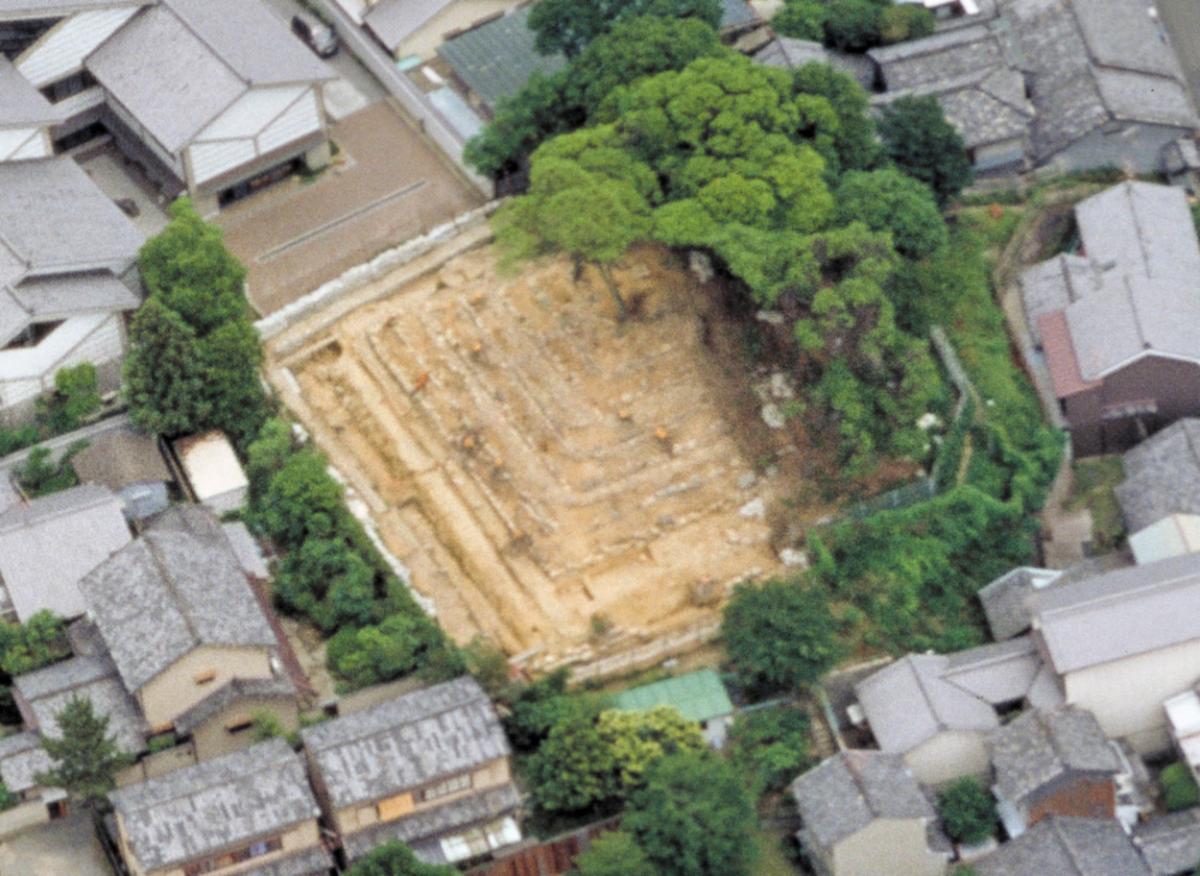
This is an “earthen tower” built by Jitchu, a priest at Todai-ji Temple. Excavations conducted from 1987 to 1998 uncovered two vertically stacked ancient foundations. With a pyramid-like structure, it is thought that one part of the tower was covered in tile roofing.
○ Hime-dera Temple Ruins
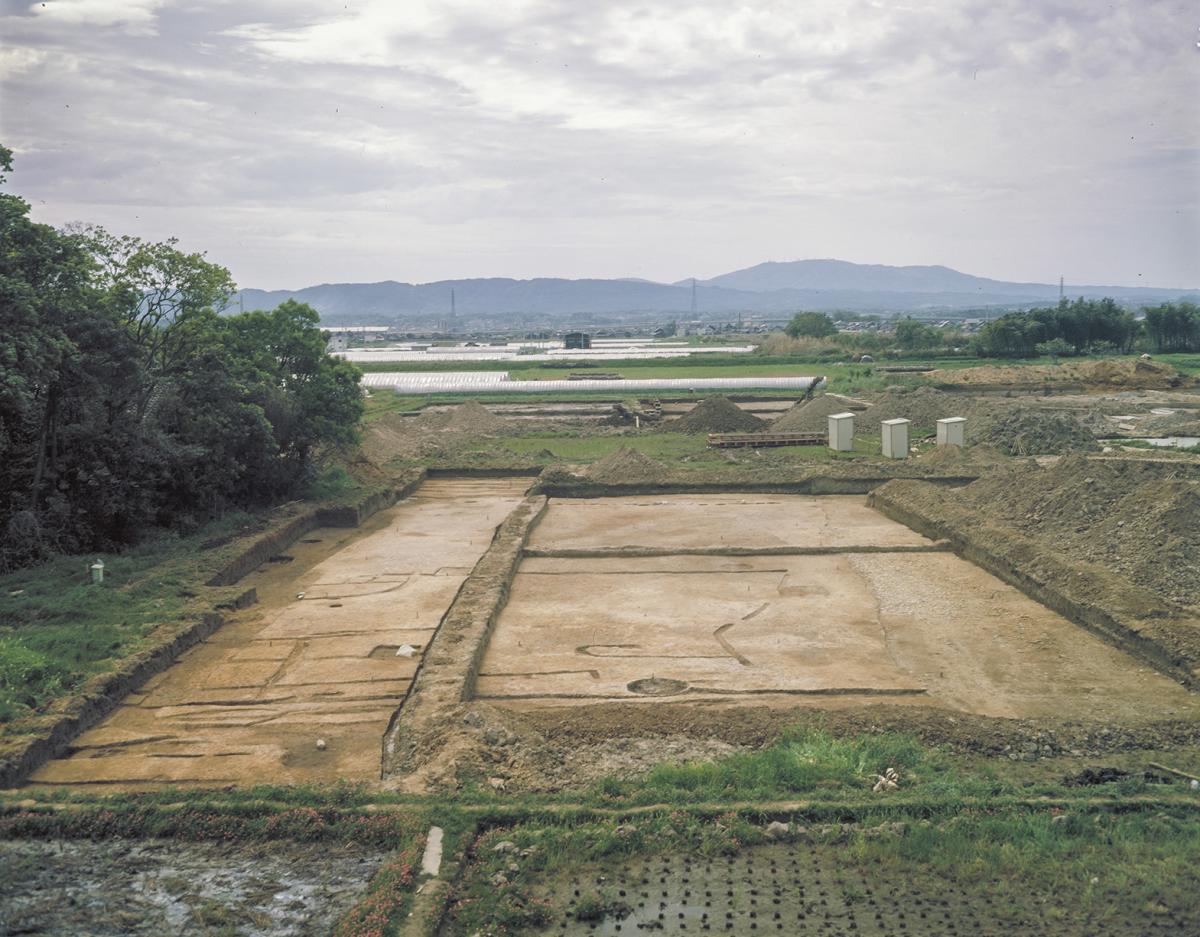
A temple located in the northeast section of the Eastern Market of Nara, for which no known name or legends have been handed down. Because the remains are located in the Higashikujo-cho Himeji district, they have come to be known as the Himeji Temple Ruins. The photograph shows the remains of an assembly hall and a monk’s living quarters discovered in a 1975 investigation.
○ Sairyu-ji Temple
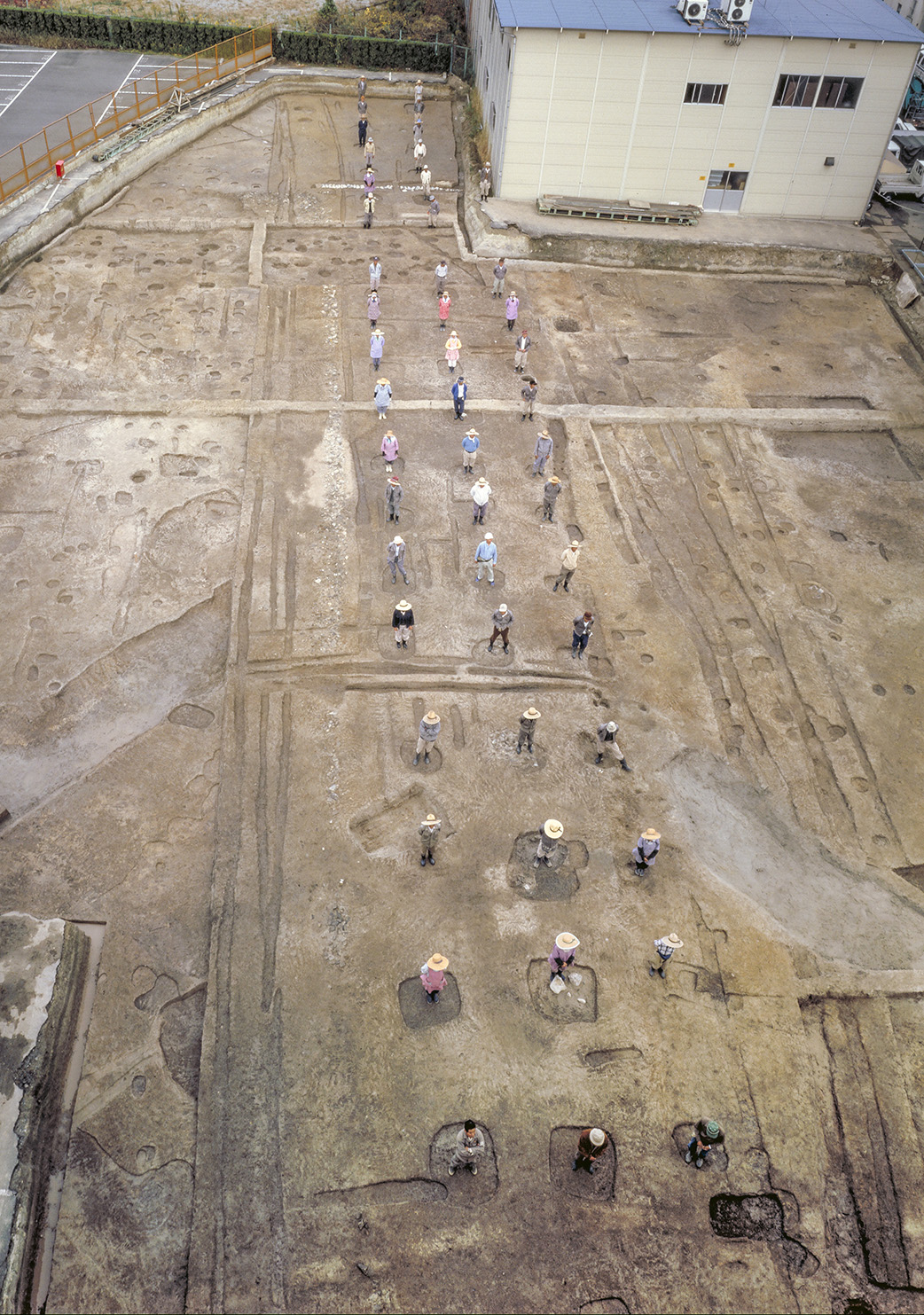
A convent commissioned by Empress Shotoku which began construction in 767, and on which several excavations have been conducted since 1971. The photograph shows the eastern corridor of the Kondo-in Main Hall excavated in 1989. The people in the photo point to the position of the pillars.
○ Amidajodo-in Temple
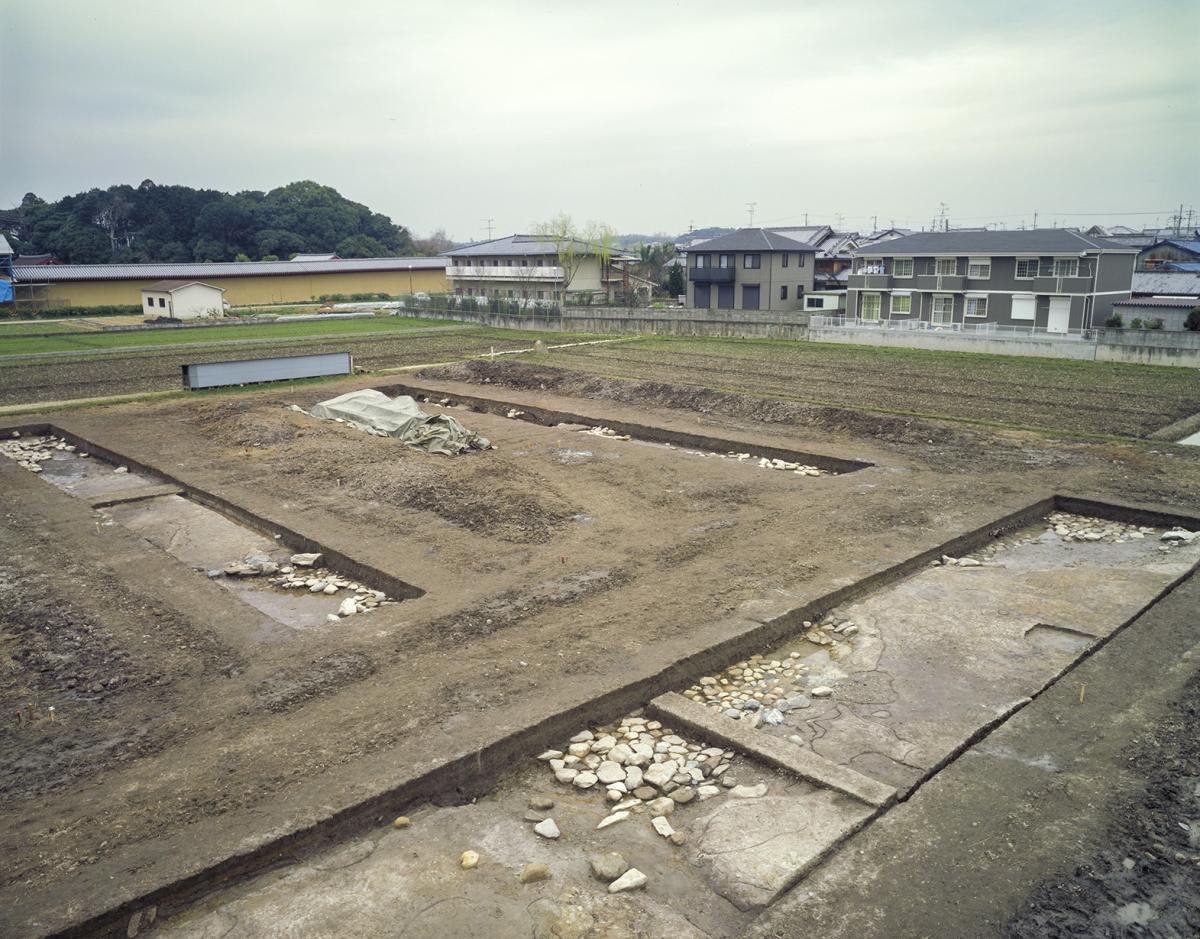
This structure was completed in 761 as the site for a memorial service to observe the first anniversary of the passing of the Empress Komyo. Discovered in 2000 was a large building with a stone foundation, as well as a stone-paved curved pond spanning around 40 meters east to west and some 35 meters north to south, containing a manmade island in the middle.
○ Kofuku-ji Temple
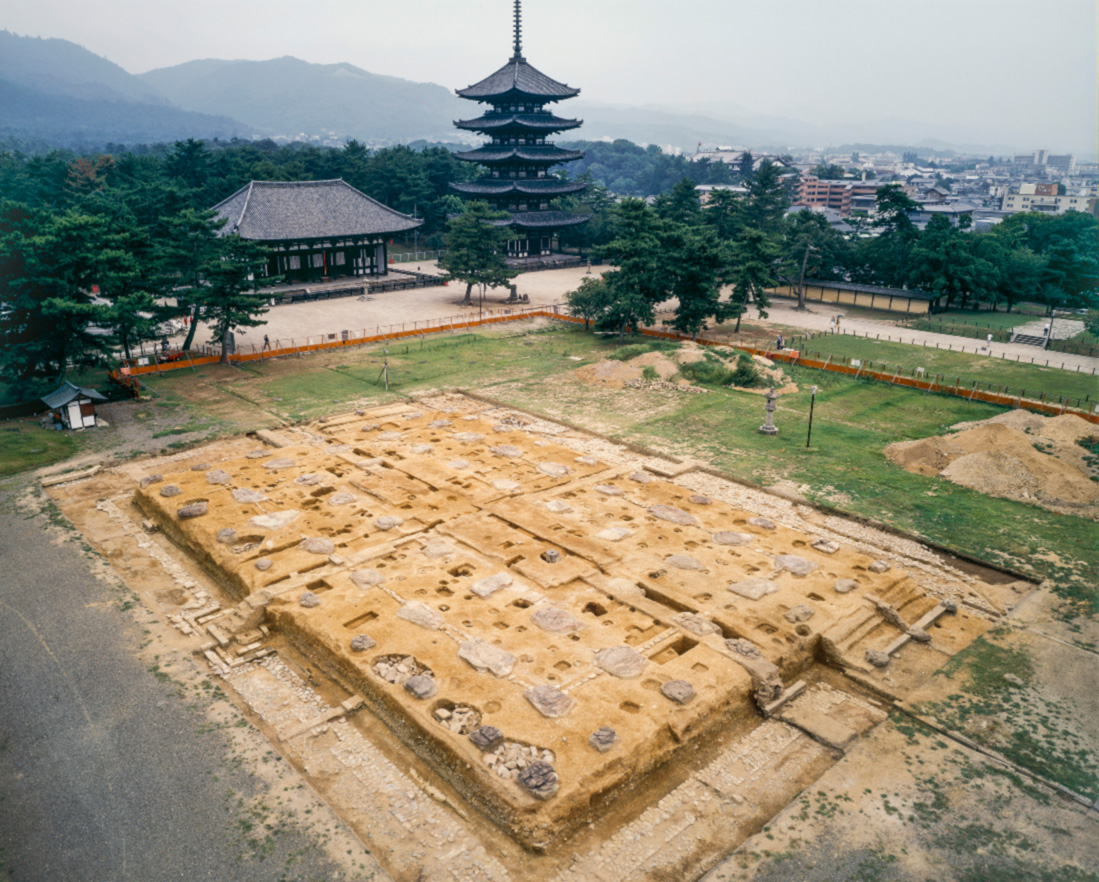
A temple associated with the Fujiwara family erected early in the Nara Period on a flared portion on the east side of the Heijo-kyo capital. In order to restore and repair the remains, the Chukondo-in Hall, Nandai-mon Gate, Hokenudo-in Hall, West Room, Middle Room and other structures have been excavated since 1998.
○ Toshodai-ji Temple
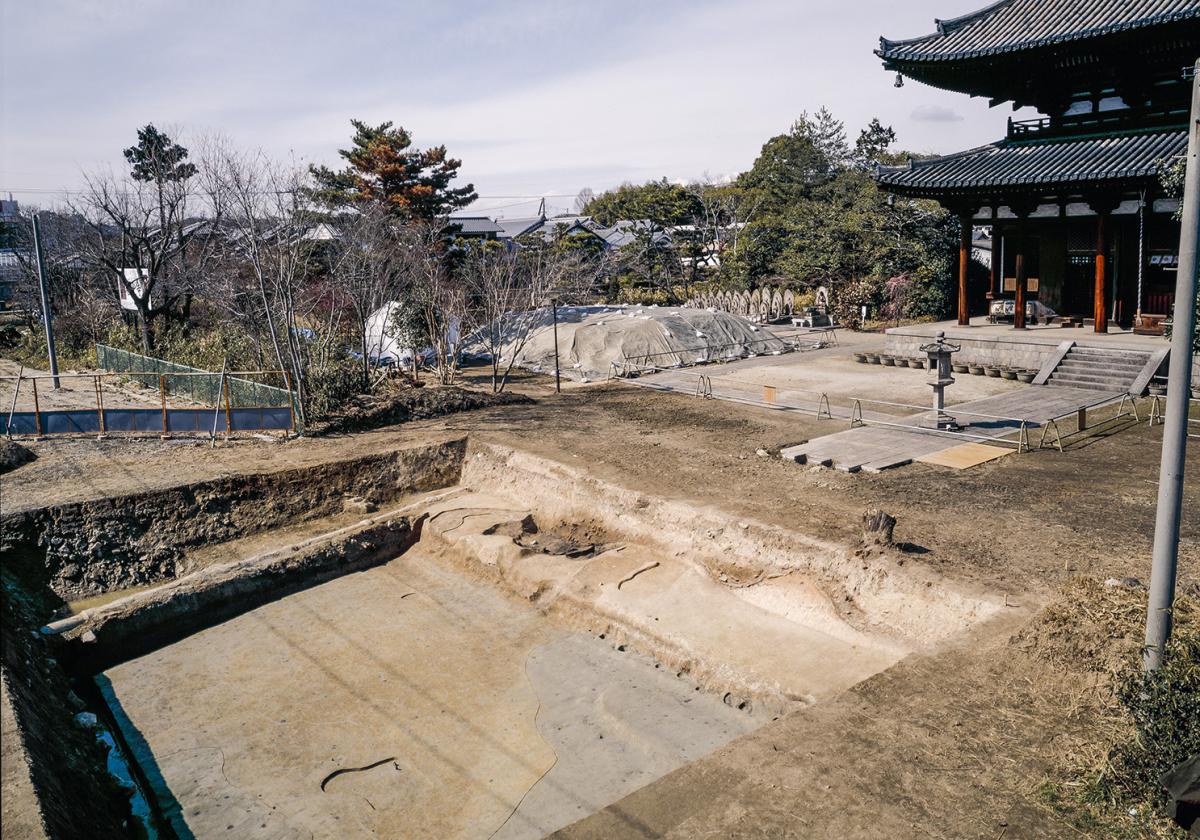
A temple established by the priest Ganjin in 759. The existing temple hall is the former Higashi Choshudo (part of the Eastern State Halls Compound) of Nara Palace, which was relocated, reconstructed and remodeled at the current site. In an archeological excavation conducted by the Archaeological Institute of Kashihara, Nara Prefecture, the discoveries included remains of a building believed to be one part of the Niitabe Imperial Estate (the predecessor of the temple).
○ Sugawara-dera Temple (Kiko-ji Temple)

This is a temple distinguished by deep ties to the Sugawara family and a Buddhist monk named Gyoki (who passed away here in 749). In 1969 an excavation team discovered remains of the temple’s Kondo Hall and gate.
○ Saidai-ji Temple
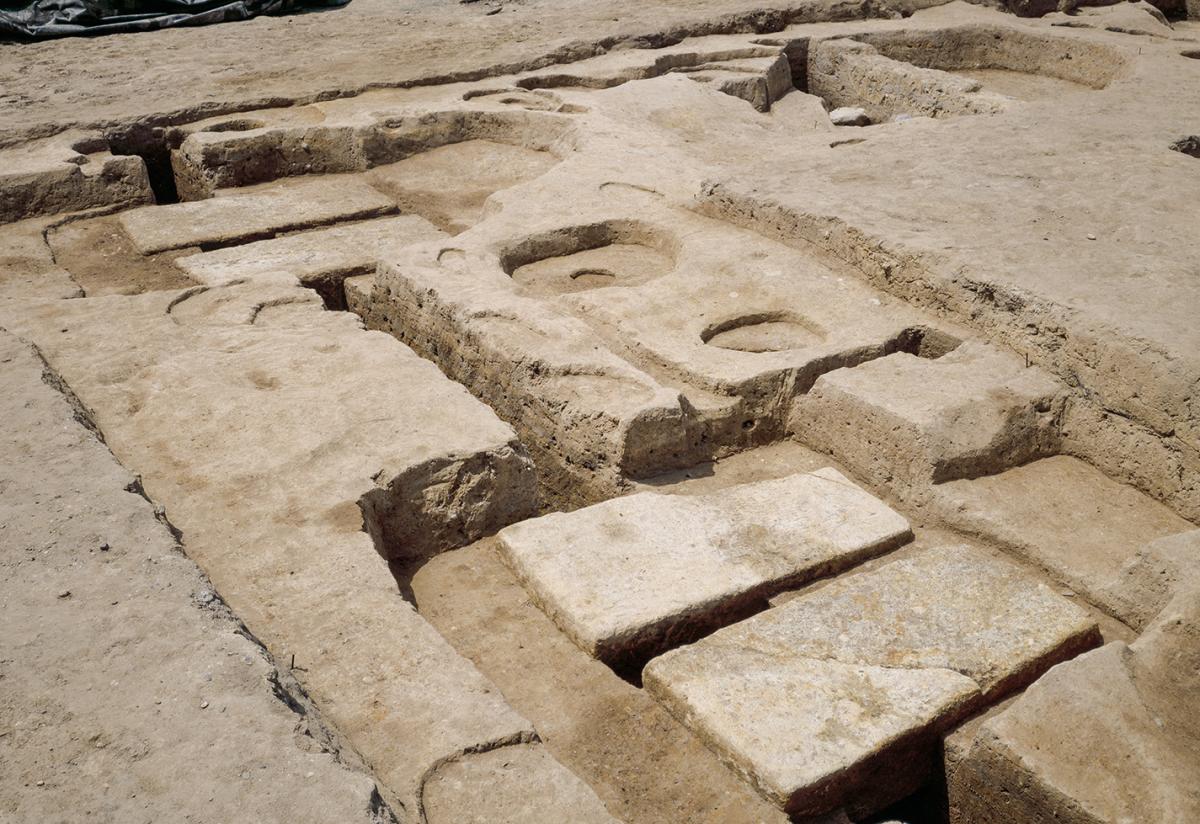
This temple was commissioned by Daijo Empress Koken (Empress Shotoku). The site excavation has been underway since 1955. The photograph shows the platform of the Yakushi Kondo Hall discovered in 2007. Large base stones which supported the foundational stones can be seen lined up.
What Are the Stripes?
The Rammed Earth Foundation
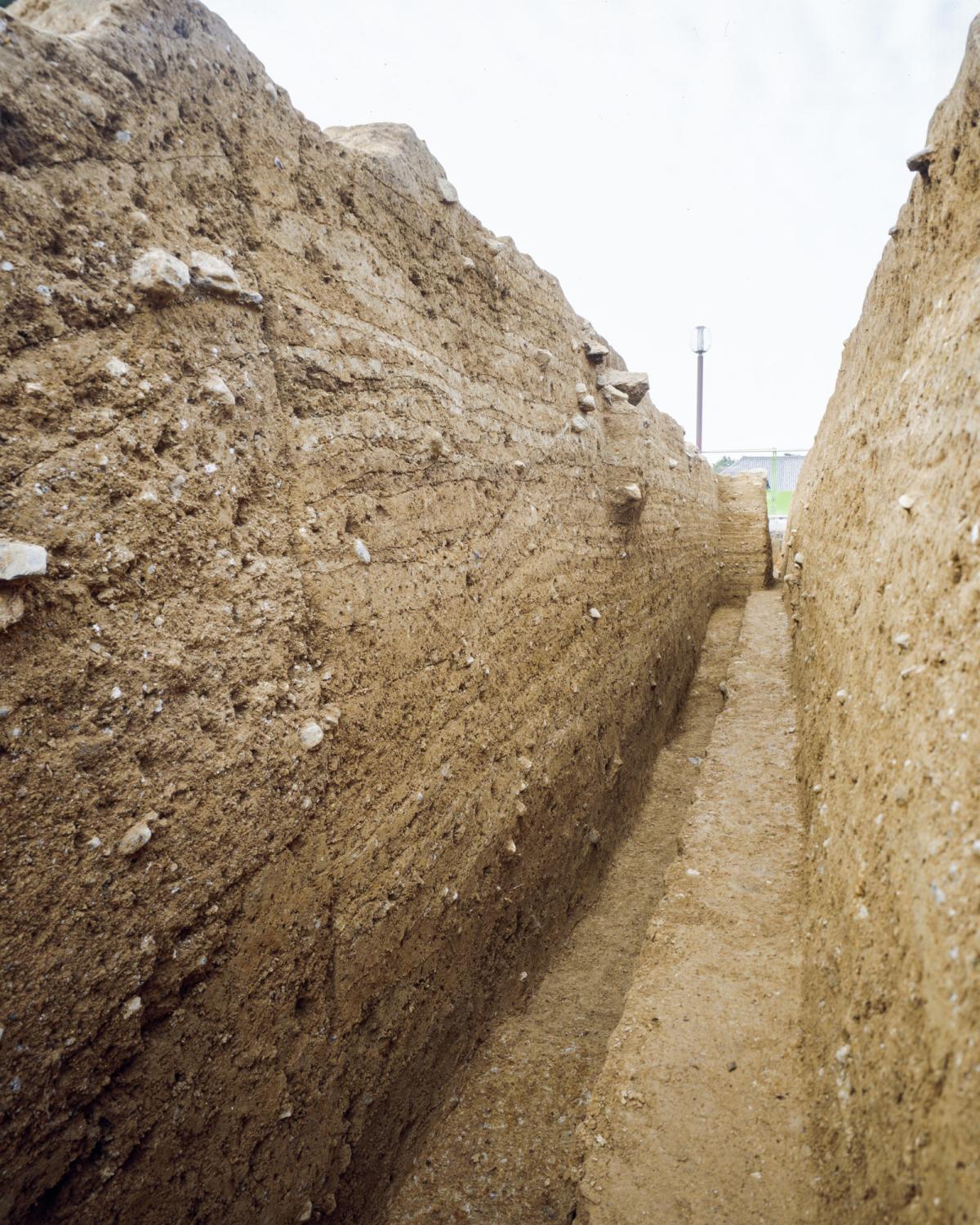
Roofs of the temples were covered with many tiles and were very heavy; in order to support the pillars and foundation stones that bore the brunt of the weight, a sturdy platform was necessary. Here, they used a method from continental Asia, in which sandy earth and clay are layered and rammed until solid. This method resulted in the striped pattern caused by the thin layers of soil seen in cross-sections of the platforms. Looking at the sample on display, the earth is rammed to approximately half of its original volume.
■ Vibrant, Multicolored Temples
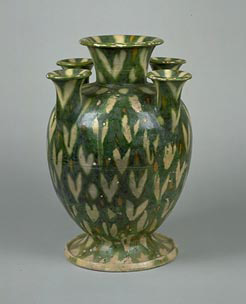
When Heijo-kyo was the capital, the many temples in and around the area were more vibrant and multicolored than we tend to imagine. Ancient temples were reflections of the shining realm of the Buddhist deities.
Old Trash and What It Tells Us About Temples
The Saidai-ji Temple Cookhouse Well
Saidai-ji was one of the major temples of Heiji-kyo. In the remains of its cookhouse, where food for the many monks was prepared, was a well measuring 2.3 m x 2.3 m. A variety of artefacts were unearthed from the well, shedding new light on aspects of temples often left out of history materials. On top of the approximately 2,700 mokkan wooden tablets discovered, earthenware thought to have been used as tableware, salt-making earthenware, bokusho black ink earthenware, Nara Sancai ware, and glazed green bricks have been unearthed, as well as more than 100,000 plant seeds and other remains.

